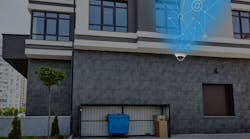One of the reasons that integrators play a key role in campus security is the fact that there is generally a great deal of technology disparity among the different buildings and facilities. This is especially true of video surveillance systems, where on the typical campus, a security integrator may find multiple brands of analog and IP cameras and recording devices.
As the goal of many campus installations is the smooth integration of these systems into an interface that can be controlled from a central location, it makes sense that a VMS often proves to be the solution for technology unification. Such was the case for Michael Blumenson, President of Buffalo, N.Y.-based Digital Surveillance Solutions (DSS), as he and his staff crafted an integrated video solution for the State University of New York (SUNY) at Buffalo.
“We were trying to move the whole university toward an efficient, full centralization of all cameras and surveillance recording systems,” Blumenson explains, “but it is a heavy lift requiring a great deal of coordination with decentralized decision-making on a very big university platform.”
After successfully implementing IP video in the campus Dining and Food Shop, medical school and athletics departments, Blumenson and DSS have set out to create a widespread, standardized platform across all locations with a centralized command center managed by the University’s Central Computing department.
A Sprawling Architecture
The University at Buffalo is the largest of the 64-campus SUNY system. The buildings crawl along what is called ‘the spine’ that connects them. The distributed architectural design was a conscious de-centralized approach to discourage too many people congregating in any one place, in response to riots of the late 1960s and early 70s. There are 30,000 students across three campuses.
Enterprise Infrastructure Services (EIS) is the department within IT that houses the servers and controls the network security campus-wide. Back in the 1970s, all IT services were centralized, but then after the expansion of computing and networking, the outlying departments weren’t getting enough service, so they created five major IT nodes across different areas of the university, including the medical school, engineering and life sciences. Each has its own IT staff in addition to Central Computing.
The Security Technology Network
IP network cameras at the university were first installed in 2004. Today, Milestone XProtect Corporate video management software (VMS) connects nearly 800 devices across the Buffalo campuses, and the system continues to grow. The surveillance hardware is a mix of various Axis static and PTZ cameras.
The university has also deployed Blue Light emergency phones around campus, which are integrated with the VMS. When someone picks up a Blue Light phone to make a call, that data goes through the Milestone rules engine which is set up to move the nearest Axis PTZ camera to view the phone station, provide real-time situational awareness and record the video. As a call comes into police dispatch, the image of the phone calling in appears on a large monitor and the operator has instant awareness of the alerting location.
“About a year ago, DSS took over the maintenance contract for our Blue Light phones,” says Joshua B. Sticht, Deputy Chief of Police, Operations, University at Buffalo. “DSS stepped in and got the system operating as expected. Also, a contractor recently damaged the protective dome of an exterior camera. When we contacted DSS the next morning to place a work order, they already knew of the problem and had arranged for replacement parts.”
In recent years as new projects and departments come on board, such as the School of Engineering and the Educational Opportunity Center, the university continues to develop best practices. Slowly, they are coalescing around a centralized platform that's managed by Central Computing (CIT) and utilized by campus police, who have access to camera views across the campus, but share the management responsibilities with Central Computing.
“Central Computing does a great job of managing the system and providing high quality process and procedure for access to the system, making sure everything is secure, backed up and properly maintained,” Blumenson explains.
The Evolution of Video on Campus
Although the university was using older analog technology in 2001, Blumenson — who was the university’s Senior LAN Analyst at the time — saw an opportunity. He was working in IT on different client server projects and his boss approached him with a problem. “Someone was misusing materials and computers in the research laboratories at the medical school, and he asked if anyone wanted to start working on setting up some cameras,” Blumenson recalls. “I thought it sounded interesting so I raised my hand and took it on.”
What began as small experiments in different spaces quickly became real installations in computing labs, anatomy labs, storage areas, data centers and office spaces. It just kept growing from there. Any time there was an issue relating to theft, vandalism or misuse, Blumenson would figure out a way to put in a video camera.
Through experimentation, they started out with little USB web cameras, which would run into inexpensive recording software on PCs. “We’d do crazy things like cobble together USB cords and throw these things over a wall, letting them hang there to cover a hallway or adjacent office, but it worked,” said Blumenson. “We were capturing footage of people stealing things, and overall started to control the environment, but it was hard to manage.”
Blumenson began looking at more sophisticated systems — such as VMS — so he could better manage things, automate recording and archiving, and make it easier for people to have credentialed access to the video. More requests started coming in from different administrators, so accessibility grew in importance.
“It wasn’t a recognition that IP video was the up-and-coming way to go, it was sort of happenstance,” Blumenson says. “I was working in IT and looking for devices that would work on the network, because we had a lot of infrastructure for the network. Milestone turned out the be the perfect solution.”
In 2007, the New York State Power Authority began offering grants to public institutions that would replace or upgrade lighting. A lot of bigger college campuses in New York were able to add other elements into those lighting projects, relating to security. “Milestone had become a de facto standard because of all the smaller projects that had been put in place over the preceding five years,” said Blumenson. “When the big bid went out to get the grant, Milestone XProtect Corporate was the key component.”
The Advantages
The VMS has enabled the university to have flexible and scalable centralized administration, wide geographic distribution, Power-over-Ethernet hardware, and the cost efficiencies of using standard IT resources — both the equipment and network infrastructure, as well as the IT Department’s expertise and maintenance routines.
Many campus departments have taken advantage of the security system — especially those dealing with expensive and dangerous materials. For example, the Chemistry Department uses it to make sure that only authorized people are using equipment and materials, which must be locked up securely. They monitor experiments, research procedures, the proper disposal of waste, etc. The medical school has similar challenges, with its biological agent research lab that must follow not only the school’s safety rules, but also federal security requirements.
Central Computing stores video data for 30 days availability online, which is then sent to tape as a backup archive. Some departments hold onto video for two to three weeks, unless special instances require more retention.
Campus police have live monitors in dispatch, so a dispatcher is consistently interacting with the system and can react quickly to alert officers in case of an incident.
There is also a support contract component with the system that DSS has been awarded, to maintain the Milestone XProtect Corporate software, Axis cameras and emergency telephones that are deployed campus-wide.
Continuing Growth
Opportunities for expansion persist, as the university continues to grow in the downtown corridor. In the next year, the medical school is constructing a new building with 200-300 cameras — all connected to the VMS. More new buildings are under construction, so new security projects are emerging, such as perimeter monitoring, parking lots and other areas.
As more people in the university saw what DSS could accomplish with the early systems, it wasn’t long before they wanted camera systems of their own. More departments want the security coverage of assets that are increasingly more valuable and therefore riskier to lose or have damaged.
Courtney Dillon Pedersen is Corporate Communications Manager at Milestone Systems. To request more info about the company, visit www.securityinfowatch.com/10214397.



